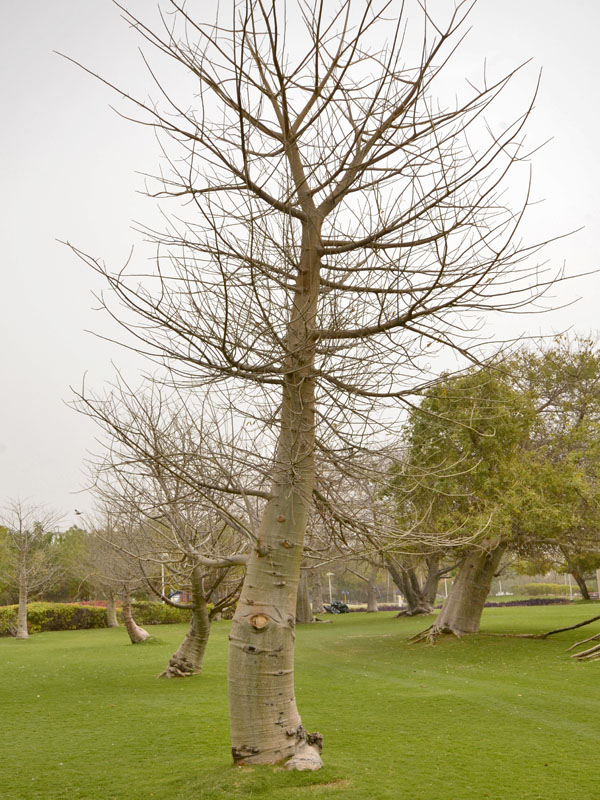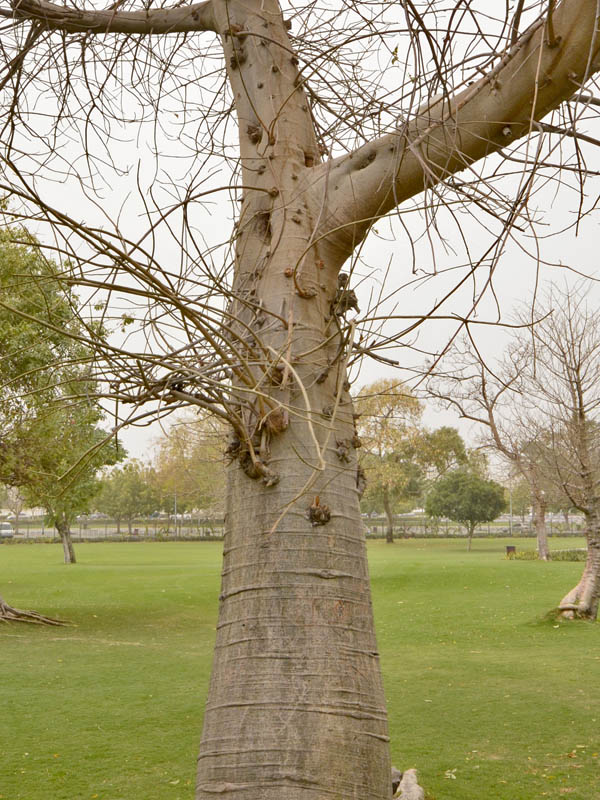
Tropicals, Woody > Adansonia > Adansonia digitata > Adansonia digitata
Adansonia digitata
African Baobab
Origin: Africa and India.
| Family |
| Malvaceae |
| Genus |
| Adansonia |
| Species |
| digitata |
| Category |
| Tropicals, Woody |
| Type |
| Tree (deciduous) |
| USDA Hardiness Zone |
| 13a - 13b |
| Canadian Hardiness Zone |
| Cool season protection under glass. |
| RHS Hardiness Zone |
| H1a |
| Temperature (°C) |
| 15 |
| Temperature (°F) |
| 59 |
| Height |
| 10 - 25 m |
| Spread |
| 30 - 38 m |
Photographs
Description and Growing Information
Flowering Period
| General Description |
| The baobab tree has a very thick trunk, with tiny branches on top. There’s a local tale that states the tree was actually planted upside down. |
| Cultivation |
| Very drought-tolerant and prefers dry, arid conditions. It should be grown in areas with well-drained soils that have an acidic pH. |
| Shape |
| Upright rounded crown. |
| Growth |
| Medium |
| ID Characteristic |
| Swollen trunk about 10 - 25 m in height, often with a bole of 3 - 10 m. Cylindrical fruit. |
| Habitat |
| Dry, low altitude, low-lying areas. |
| Bark/Stem Description |
| Firm rugged bark. |
| Leaf Description |
| New leaves will have 2 - 3 leaflets. As the tree matures it will increase to anywhere from 5 - 9 leaflets. May be sessile to shortly petiolate. |
| Flower Description |
| The flowers are white in colour, hang down rather loosely, and are sized up to 200 mm in diameter. The scent of the flower, as stated above, can be very sweet. The petals of the flower are very thin, and are wavy in form.. |
| Fruit Description |
| Fruit is cylindrical or egg-like in shape, and is coloured green to brown. The pod itself is covered in brown-yellow hairs. The shell surrounding the fruit is woody and hard, and the substance inside is an off-white, dry, powdery substance when ripe. The seeds further in the fruit are kidney bean-shaped, black, and have a hard exterior. |
| Colour Description |
| Pale brown bark. New growth is a reddish-brown colour which pales and toughens with age. |
| Notable Specimens |
| Royal Park Rajapruek, Mae Hia, Thailand. |
| Propagation |
| Propagation by seed. |
| Ethnobotanical Uses (Disclaimer) |
| The pulp from the fruit is high in antioxidants and has three times the vitamin C content of oranges. Dried pulp may be dissolved in water or milk to make a refreshing drink, and is occasionally used in cereal bars and smoothies. Cooking oil may be extracted from the seed but this process is rare. Oil meal, the waste product of the extraction process, may also be used as animal feed. The young leaves can be eaten as a relish and can also be fed to ruminant animals as fodder. |

